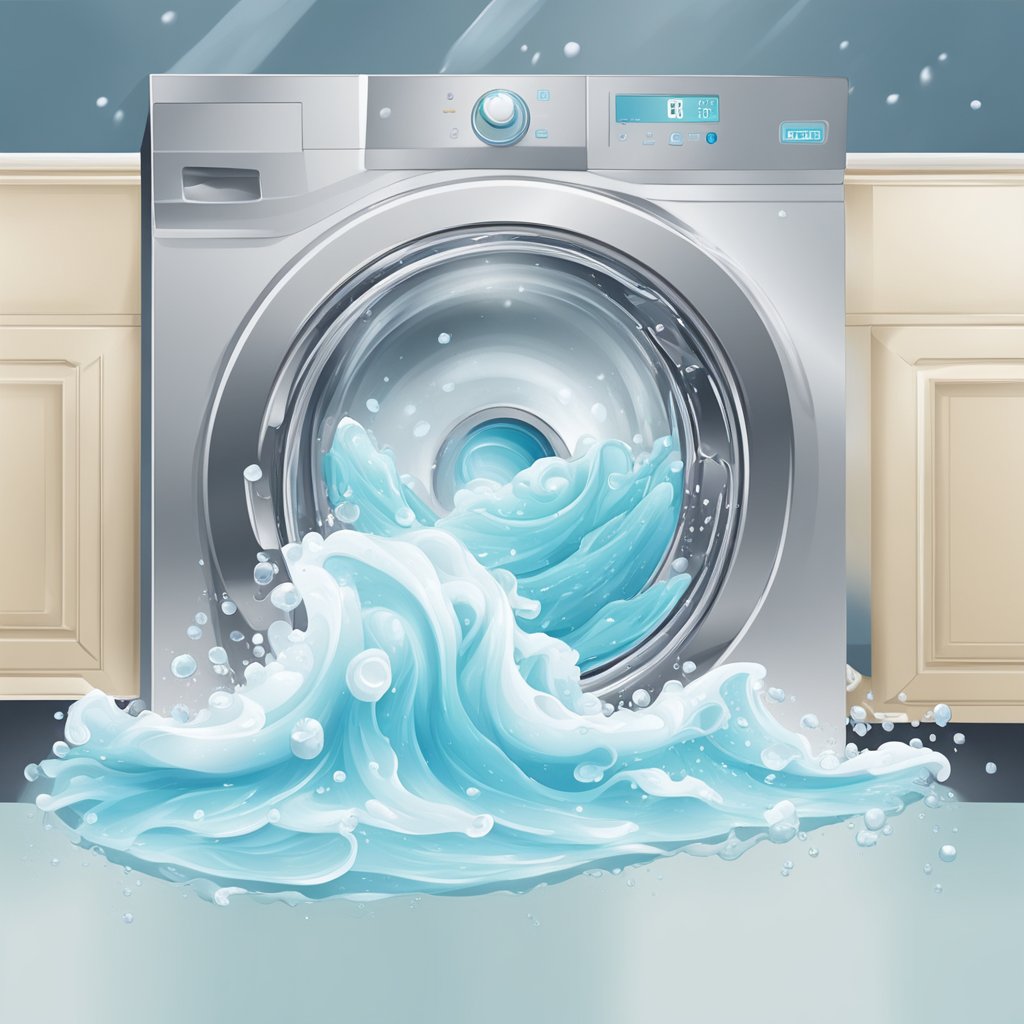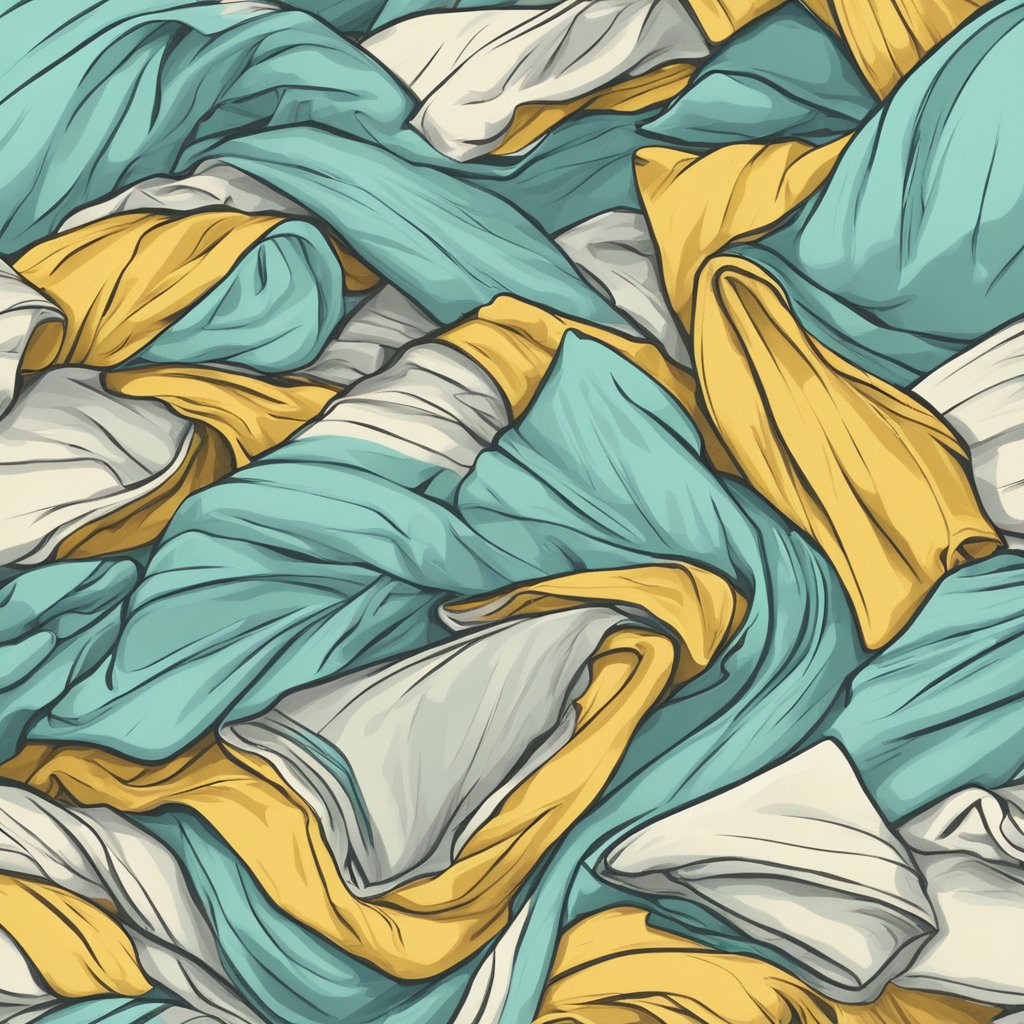5 Mistakes EVERYONE Makes When Washing Their Sheets! (And What To Do Instead)
We all understand the unparalleled feeling of sliding into a bed made up with freshly washed sheets. Clean sheets aren’t just about comfort; they play a pivotal role in maintaining our overall health and sleep quality.
However, despite our best intentions to keep our bedding fresh and clean, many of us inadvertently commit some all-too-common washing faux pas.
1. Overloading the Washing Machine
Overview
It might seem efficient to stuff as many items as possible into the washing machine, making the most out of each laundry cycle. However, when it comes to washing your sheets, this strategy can backfire.
Consequences
Overloading the washing machine leads to several issues:
- Uneven washing: Cramming too many items in means your sheets might not be thoroughly cleaned. Parts of the sheet can end up folded and compressed, preventing the detergent and water from penetrating every fiber.
- Detergent residue: Too many items prevent the detergent from being evenly distributed and thoroughly rinsed out. This residue can attract more dirt and can cause skin irritations when you snuggle into your bed.
- Wear and tear on sheets: The excessive rubbing of overloaded items can strain the fibers in your sheets, leading to premature wear, thinning, or even tearing.

Solution
To ensure your sheets get the best wash:
- Size it right: Always refer to your washing machine’s capacity guidelines. If you’re unsure, a good rule of thumb is to wash no more than two sets of sheets at once in a standard-sized machine.
- Wash sheets separately: To give your sheets the space they need, try washing them separately from other laundry items. Not only does this ensure a thorough clean, but it also helps to prevent potential damage from zippers, hooks, or rough fabrics found on other clothing.
By adhering to these guidelines, you can protect the lifespan of your sheets and guarantee that every night you’re diving into bedding that’s truly clean and comforting. Stay tuned for more common mistakes and their solutions in the next sections.
2. Using the Wrong Detergent or Too Much of It
Overview
Laundry detergent plays a crucial role in getting our sheets clean and fresh. But it’s not just about pouring liquid or throwing in a pod; the type of detergent and the amount you use can greatly influence the outcome of your wash.
Consequences
Missteps with detergent can lead to:
- Residue left on sheets: Using too much detergent can often leave a filmy residue on sheets. This isn’t just unpleasant to the touch but can also trap bacteria and become a breeding ground for allergens.
- Potential skin irritations: Some detergents contain harsh chemicals or fragrances that, when not properly rinsed out or used in excess, can irritate the skin. This is especially concerning for those with sensitive skin or allergies.
- Sheet discoloration: Over time, the wrong detergents can cause colors to fade or white sheets to turn grayish or yellowish.

Solution
To ensure your sheets are impeccably clean without any adverse effects:
- Follow recommendations: Use the amount of detergent recommended on the product label or, if you have a high-efficiency washer, the amount specified by the manufacturer.
- Opt for mild detergents: Choose a mild, preferably natural, detergent that’s free from harsh chemicals or strong fragrances. There are many eco-friendly options available that are gentle on both your sheets and your skin.
- Measure it out: If you’re using liquid detergent, consider using a measuring cup. It’s easy to overpour, so measuring can help you use just the right amount.
- Consider a second rinse cycle: If you suspect there’s detergent residue left on your sheets, running a second rinse cycle can ensure they’re thoroughly clean.
By giving your detergent choice and usage a bit of thought, you can not only keep your sheets in optimal condition but also promote healthier skin and better sleep.
3. Washing Sheets in Extremely Hot Water
Overview
It’s a common belief that the hotter the water, the cleaner the wash. While it’s true that hot water can kill germs and dust mites, excessively high temperatures aren’t always the best choice for our sheets.
Consequences
Washing sheets in boiling hot water can lead to:
- Damaging fibers: Extreme temperatures can weaken the fibers in your sheets, making them more prone to tearing or wearing out prematurely.
- Fading colors: Brightly colored or dark sheets might lose their vibrancy when exposed to very hot water, leading to faded and less attractive bedding.
- Shrinkage: Just like that favorite sweater that became child-sized after one hot wash, your sheets can also shrink, making them difficult to fit on your bed.

Solution
To wash your sheets effectively without causing damage:
- Follow the care label: This is the golden rule for laundry. The care label on your sheets will provide temperature recommendations to ensure longevity and cleanliness.
- Opt for warm water: For most sheets, warm water will offer a thorough clean without the potential damage caused by hot water.
- Cold water for colors: To preserve the color of your sheets and prevent bleeding, it’s often recommended to wash colored sheets in cold water.
- Special care for stains: While hot water can set certain stains, it can be effective for others like oil-based stains. It’s crucial to determine the nature of the stain before choosing your water temperature.
By carefully selecting your water temperature based on the needs of your sheets and any specific stains, you can ensure cleanliness without compromising the quality and lifespan of your bedding.
4. Not Pre-treating Stains
Overview
Stains on sheets can be a common occurrence, whether from a morning coffee mishap, makeup, or the occasional snack in bed. While it’s tempting to toss stained sheets directly into the washing machine, expecting the regular cycle to handle it, this approach can lead to disappointments.
Consequences
Neglecting to pre-treat stains can result in:
- Permanent stains: Some stains, if not addressed promptly and correctly, can become permanent, tarnishing the look of your sheets.
- Multiple wash cycles: Stubborn stains might require several washes if not pre-treated, which not only consumes more water and energy but can also wear out your sheets faster.
- Spread of stains: Without pre-treatment, some stains can spread, causing a larger stained area or even affecting other items in the wash.

Solution
To effectively deal with stains on sheets:
- Act promptly: The sooner you address a stain, the better the chances of completely removing it. Fresh stains are always easier to treat than old, set-in ones.
- Spot treat: Use a reliable stain remover to treat the affected area. Gently dab (don’t rub!) the stain with the remover using a cloth or a soft-bristled brush.
- Check before drying: After washing, before drying your sheets, check to ensure the stain is gone. The heat from the dryer can set stains, making them even more challenging to remove.
- Research stain types: Different stains require different treatments. For instance, protein-based stains (like blood) are best treated with cold water, while oily stains might need a warmer wash.
By giving stains the attention they need before a full wash, you can maintain the pristine appearance of your sheets and reduce the wear and tear that multiple washes can cause.
5. Skipping the Rinse Cycle or Over-Drying
Overview
In our haste to complete laundry tasks or due to machine settings oversight, it can be tempting to rush the washing process or crank up the dryer to the highest heat. These shortcuts, however, might cost you in the long run.
Consequences
Rushing the wash or drying process can lead to:
- Detergent residue: Skipping the rinse cycle or not ensuring it’s thorough can leave behind detergent on your sheets. This not only feels uncomfortable but can attract more dirt and may lead to skin irritations.
- Reduced sheet lifespan: Over-drying your sheets or using very high heat can strain and weaken the fibers, leading to faster wear and tear.
- Fire hazard: Excessive lint build-up due to over-drying is not only bad for your sheets but poses a potential fire risk in your dryer.

Solution
To ensure your sheets get the proper care they deserve:
- Always rinse: Never skip the rinse cycle. It ensures all detergent is washed away, leaving your sheets fresh and free from any residue.
- Opt for low-heat drying: While it might take a bit longer, using a low-heat setting for drying your sheets will preserve their fibers and reduce the chances of shrinkage.
- Air dry when possible: If you have the space and the weather permits, consider air drying your sheets. It’s the gentlest method and can leave your sheets with a fresh, natural scent.
- Clean your dryer’s lint trap: Before every drying cycle, make sure to clean out the lint trap. This will not only speed up the drying process but also reduce potential fire hazards.
By paying attention to both the washing and drying process, you can ensure your sheets remain comfortable, clean, and in good condition for many nights of restful sleep.
Let Us Know How We’re Doing!
Did this expertly prepared resource answer your question?
Do you have another question about home maintenance, home improvement projects, home appliance repair, or something else?
Get more information, send in questions and keep the discussion going by contacting the I’ll Just Fix It Myself company customer service team at at 1-800-928-1490 or Email us at [email protected]
